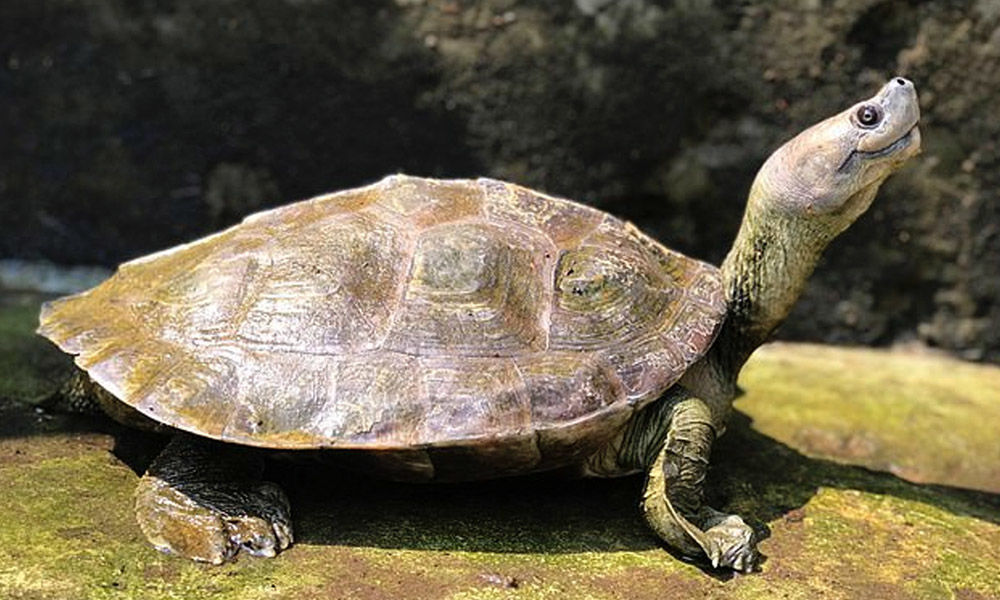Conservationists in Myanmar have successfully brought back a species of turtles with a permanent smile on its face from the brink of extinction.
The Burmese roofed turtles, one of the world’s most endangered turtles, were believed to have died around 20 years ago. Measuring up to two foot long, these turtles have bulging eyes as well as upturned lips. Following an ambitious conservation project spanning the last two decades, their numbers have now grown upwards of 1,000.
The species are found only in the river systems of Myanmar and was being considered to be classified as extinct in the year 2000.
‘Rampant egg collection, conversion of nesting beaches to seasonal agricultural fields, and chronic over-harvesting of adults by fishermen led to long-term population declines, and by the 1970s the Burmese roofed turtle was assumed to be extinct,’ said Wildlife Conservation Society, Myanmar.
However, following the purchases of a living specimen in a Chinese wildlife market, it made its way into the hands of an American turtle collector in the early 2000s. Soon after, while on field survey, scientists chanced upon two populations of the animal in the wild.
Located in the Dokhtawady and upper Chindwin Rivers, these individuals became part of a breeding programme to save the species. Thanks to the programme, the species is no longer considered to be at risk.
‘We came so close to losing them. If we didn’t intervene when we did, this turtle would have just been gone,’ Steven G Platt, a herpetologist at the Wildlife Conservation Society, who led the campaign to set up the breeding programme, told the New York Times.
While females of the species are larger than males and can grow to be larger than the size of a car steering wheel, the males undergo a colour change during the breeding season.
While the males have heads green in colour, during the breeding season, their heads turn more yellow with startling black markings.
Around 1,000 of these turtles now live at three facilities in Myanmar, and five wild females continue to go back to the Chindwin beach to lay eggs.
Also Read: Researchers Capture World’s Largest Gathering Of Endangered Green Turtles












